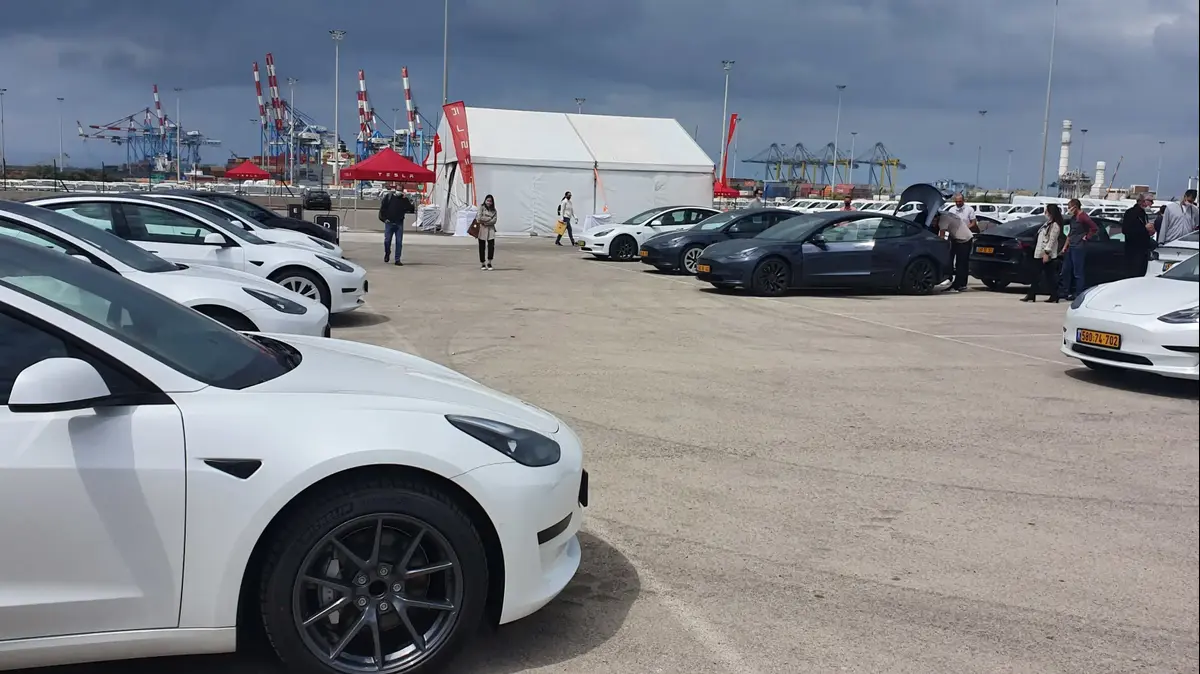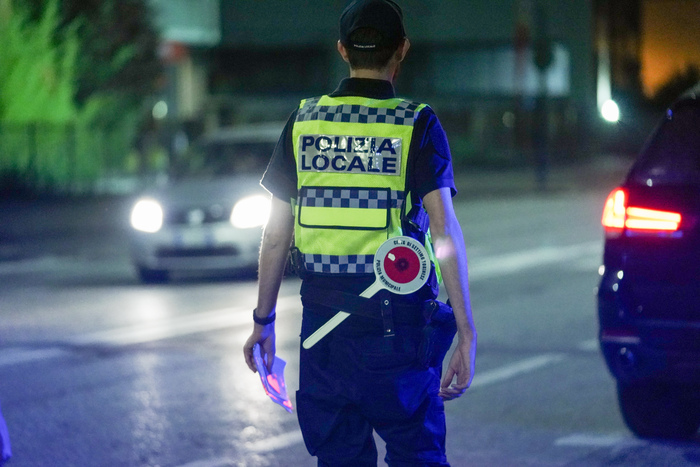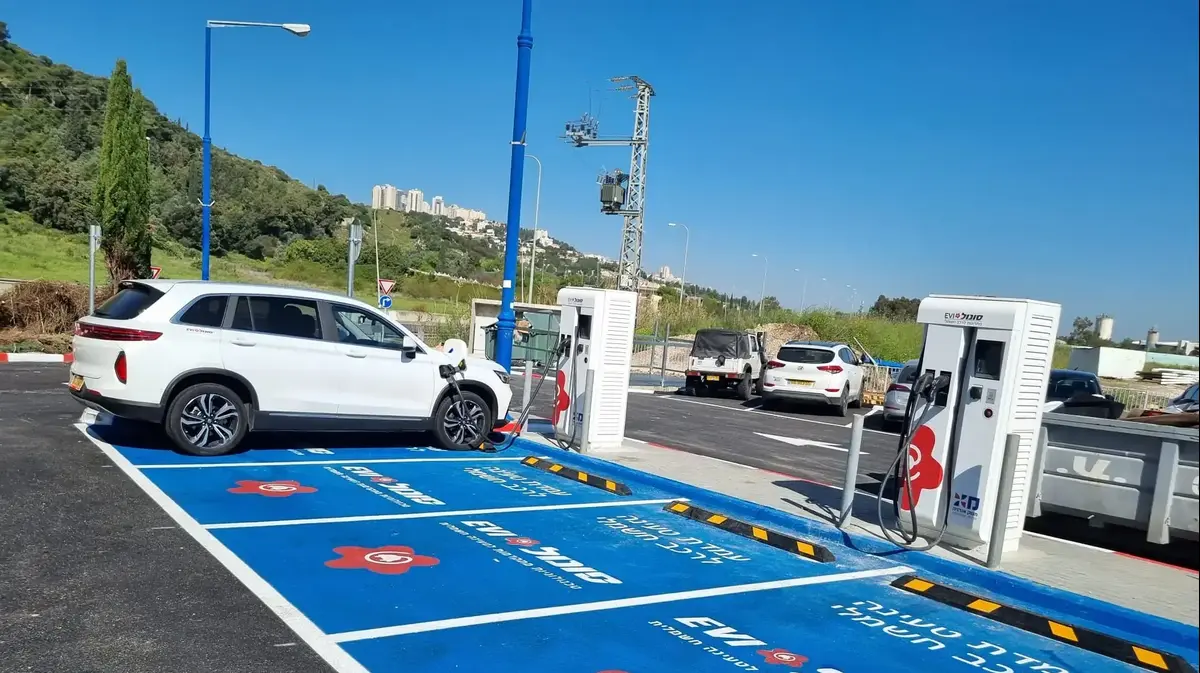Enlarge image
A so-called telephone driver controls a car remotely
Photo:
Markus Scholz / dpa
Hamburg's Senator for Transport and Mobility Turnaround, Anjes Tjarks (Greens), announced on Sunday morning that the Hanseatic city had a partnership with the car sharing service Vay, a tech start-up from Berlin.
Tjarks himself drove up to Hamburg's Hafencity in one of the new vehicles together with company boss Thomas von der Ohe.
The special thing about it: the car drove as if by magic.
The car was controlled by a so-called tele driver. By a person who is not sitting in the vehicle but in front of a huge screen in the office. As early as next year, it will be remotely driving the company's cars to customers who have requested a car sharing vehicle via an app. This should reduce the number of vehicles on Hamburg's streets. An interim solution to autonomous driving?
There are already many sharing offers, i.e. the possibility of several people sharing a vehicle - also in Hamburg. The offer from Vay is different, however, it is a hybrid of taxi and car sharing. Just like with a taxi provider, customers can book a vehicle via the app - in this case an electric Kia Niro model. This then comes up within a few minutes. The customer gets in, takes the wheel and drives himself to the destination of his choice, just like with car sharing models. What is new, however, is what happens between and after these two processes.
Because then the so-called tele drivers, specially trained drivers, steer the cars from a distance to the next customer or look for a parking space.
The offer is therefore not an autonomous car project; a person continues to control the vehicle.
However, he is no longer in the car, but in the recently opened Vay office in Hamburg's Hafencity.
This novel principle is intended to solve several problems at once - from cities like Hamburg, but also from sharing models.
Approval is still pending
A major criticism of various sharing and pooling models has so far been that they tend to fill cities with even more cars than to reduce the number of vehicles. The number of cars on the streets has been increasing in Hamburg for years. There were 799,434 cars at the beginning of the year. Solving this problem is currently a concern of some companies. The car subscription provider Vive La Car, for example, recently launched a model in which several households can share a car on a subscription basis. So now the offer from Vay: Tele-drivers drive empty cars from one customer to the next in order to reduce the number of vehicles required in the city.
Hamburg's Senator for Transport Anjes Tjarks is certain that the new service will be able to pay for the traffic turnaround he is aiming for in the Hanseatic city several times. »We already have many car sharing offers, but so far they have all been located in the city center. That is now changing, ”Tjarks told SPIEGEL. The offer starts next year with a few vehicles in Bergedorf, a suburb of Hamburg. Further districts on the outskirts of the city are to follow. The vehicle fleet should then increase piece by piece. "The mobility turnaround is wanted in the inner city, but won in the outer districts," says Tjarks.
For two years, Vay tested its vehicles in Berlin, where the start-up was founded. The three founders have had engineering and development experience in the USA in the past. CEO von der Ohe once launched the Amazon service Echo. Now they want to promote mobility in Germany together. 70 people developed the new software and hardware solution. During the tests in Berlin, there was a man on board who could intervene in the controls in an emergency. This was also necessary for the presentation at the weekend, because: The approval for the new service is still pending. When the project starts in the first quarter of 2022, however, that should be done. The vehicle should actually drive up to the customer's premises alone.
Here's how: Various cameras placed on the car generate a 360-degree image of the road traffic.
This is sent over the cellular network to the company's office, where it is displayed on a giant screen.
The driver sits in front of it in a kind of simulator: steering wheel, gear lever and pedals in front of him.
He then controls the vehicle remotely via antennas on the cars.
To prevent disruptions, the company uses networks from different providers at the same time.
In addition, a network map was created: The routes of the remote-controlled vehicles should only go through areas in which no dead zone is to be expected.
If there is a malfunction, all vehicles are equipped with an emergency stop function that brings the cars to a standstill on the right-hand side of the lane.
Cheaper than autonomous driving
This variant is intended to solve the cost problem of various sharing models. Shuttle services such as the Moia ride pooling offer, in which several people book a tour together via the app, only pay off when there is no longer a driver on board each vehicle. The driver to be paid is the cost-driving factor of such models. If it disappears, the company will save money and the customer on site will also have to pay less. A supposed win-win situation, which is why many providers want to drive autonomously in the future. The problem: the technology for this is just as expensive.
Lidar sensors in particular, which are required for this, still cost a lot of money. The Vay system, which only relies on cameras, in turn only costs "a few thousand euros per car," as von der Ohe says. In addition, as many examples from the past show, autonomous driving systems are still flawed. There have been some in the past. "As long as algorithms are not perfect, you need the people who make the decisions," says chief engineer Daniel Buchmueller when presenting the project.
Vay now has drivers who have to be paid. However, thanks to the new model, tele-drivers can take turns driving different vehicles to customers - depending on where a vehicle is needed. "That's a big advantage. The ratio of driver to car is not nearly 1: 1, «says Thomas von der Ohe. The tele-drivers can steer the cars from a distance of up to 100 kilometers. "The cars in Hamburg are only controlled by tele-drivers who are also based in Hamburg," says engineer Buchmueller. In the future, the service is to be integrated into the public transport offer of the city of Hamburg. Other cities are to follow.
It is no coincidence that the new car sharing service was presented this Sunday: the ITS World Congress starts tomorrow in Hamburg.
There, 400 exhibitors from all over the world present the latest developments in everything to do with intelligent mobility, networked transport and smart logistics.
Hamburg also wants to use the new partnership to present itself as an innovative model city.
And Vay?
At least it does not rule out the possibility of switching to autonomous driving in the future - albeit in the far future.















